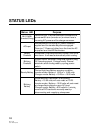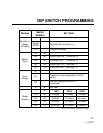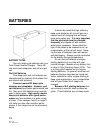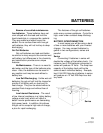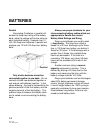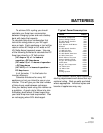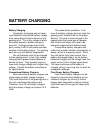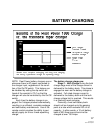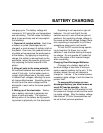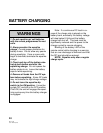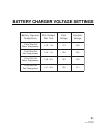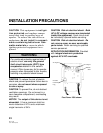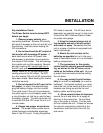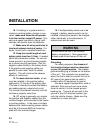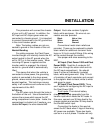
90-0115-00
10/97 Fltman.pm65
Gel cell batteries can accept a higher
rate of charge. Consult the manufacturer for
specifications.
Stage 2 -
Acceptance Charge
The
acceptance stage immediately follows the
bulk charge stage. During this stage the
battery voltage is held constant at the bulk
charge voltage limit and the current gradu-
ally ramps down. During this stage the
battery is accepting its final amount of
charge current and the last of the sulfate on
the plates is removed.
The acceptance stage lasts until the
charge current reaches about 6-7 Amps. A
timer will terminate the acceptance stage if
this current level is not reached. This timer
is set automatically when the dip switches
for battery type are set. Maximum accep-
tance time is 1 hour for wet cells and 3
hours for gel cells. Gel cell acceptance time
can be increased because the battery is not
gassing. Expect wet cell batteries to gas
somewhat during acceptance, this is a
necessary part of the charging process.
Stage 3 -
Float Charge
When the
acceptance stage is terminated, either
because the charge current ramped down to
6-7 Amps or the timer engaged, battery
charger current will shut off. The unit moni-
tors the battery voltage while it drifts down
from the bulk charge voltage limit. When it
reaches the float voltage set point, the float
charge stage is engaged.
The float charge stage holds the battery
voltage at a lower level, where it is safe for
long term battery maintenance. During the
float charge stage, the full output current of
the battery charger is available to operate
any DC appliances that may be on the
system, while constantly maintaining the
float charge voltage.
The battery charger remains in the float
charge stage indefinitely until the charger is
disconnected from incoming AC power.
Stage 4 -
Equalizing Charge
This is
the only battery charger stage which is not
engaged automatically. It must be manually
initiated each time it is necessary to equal-
ize using a dip switch on the back of the
remote control. Applying an equalizing
charge is not possible without the use of a
remote.
Periodic equalizing is recommended by
most wet cell deep-cycle battery manufac-
turers. There are no firm rules for how often
an equalizing charge should be applied, but
once a month is a good rule of thumb for
batteries which are regularly cycled, less
often for systems in only occasional use.
The equalizing charge is a timed, 8-
hour cycle. If desired, it can be ended by
interrupting the AC power to the charger at
any time during the cycle. Equalizing
should be engaged after the batteries have
been fully charged by a normal battery
BATTERY CHARGING
18



